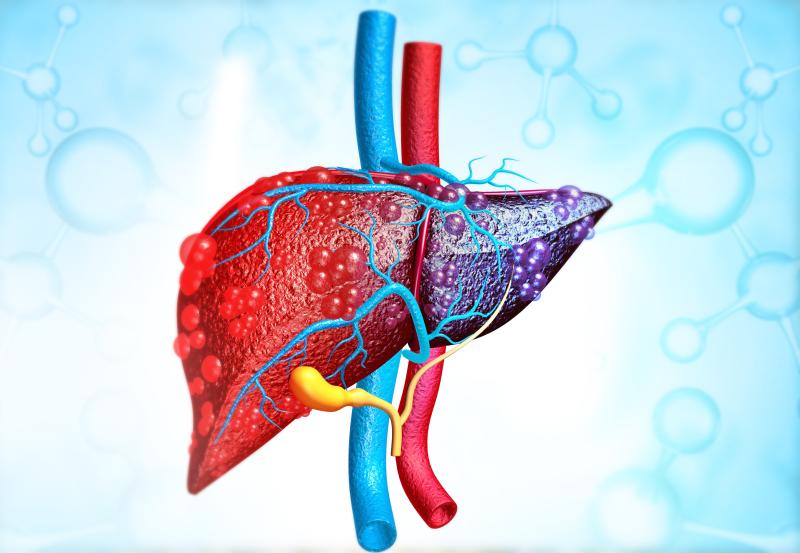
Radiologic nonalcoholic fatty liver disease (NAFLD) further increases the risk of hepatocellular carcinoma (HCC) in patients with chronic hepatitis B (CHB) in whom the hepatitis B virus (HBV) is suppressed by antivirals, results of a study have shown.
In addition, the investigators noted that those with incomplete biochemical response (IBR) should be suspected of concurrent NAFLD.
Consecutive CHB patients whose serum HBV DNA levels were continuously suppressed <2,000 IU/mL with antiviral treatment were included in this study that sought to determine whether NAFLD additionally increased the risk of HCC among patients whose HBV was under control. Those with concomitant hepatitis C infection, autoimmune hepatitis, or excessive alcohol use were excluded.
NAFLD was radiologically diagnosed.
A total of 826 patients were included, of whom 86 (10.4 percent) developed HCC during the study period (median, 43.1 mo). After adjustment for age, the presence of cirrhosis, hepatitis B envelop antigen positivity, low-level viraemia, and hypertension, those with NAFLD (n=26) were found to be at greater risk of developing HCC than those without (n=566; adjusted hazard ratio [aHR], 1.67, 95 percent confidence interval [CI], 1.05–2.63; p=0.03).
Furthermore, IBR (alanine aminotransferase levels ≥40 IU/L) was significantly associated with the presence of NAFLD (p<0.001 by χ2 test). Of note, IBR at the time of virological response predicted the development of HCC (aHR, 1.63, 95 percent CI, 1.06–2.54; p=0.03).
“Further study is warranted to evaluate whether improvement of NAFLD might decrease the risk of HCC development,” the investigators said.